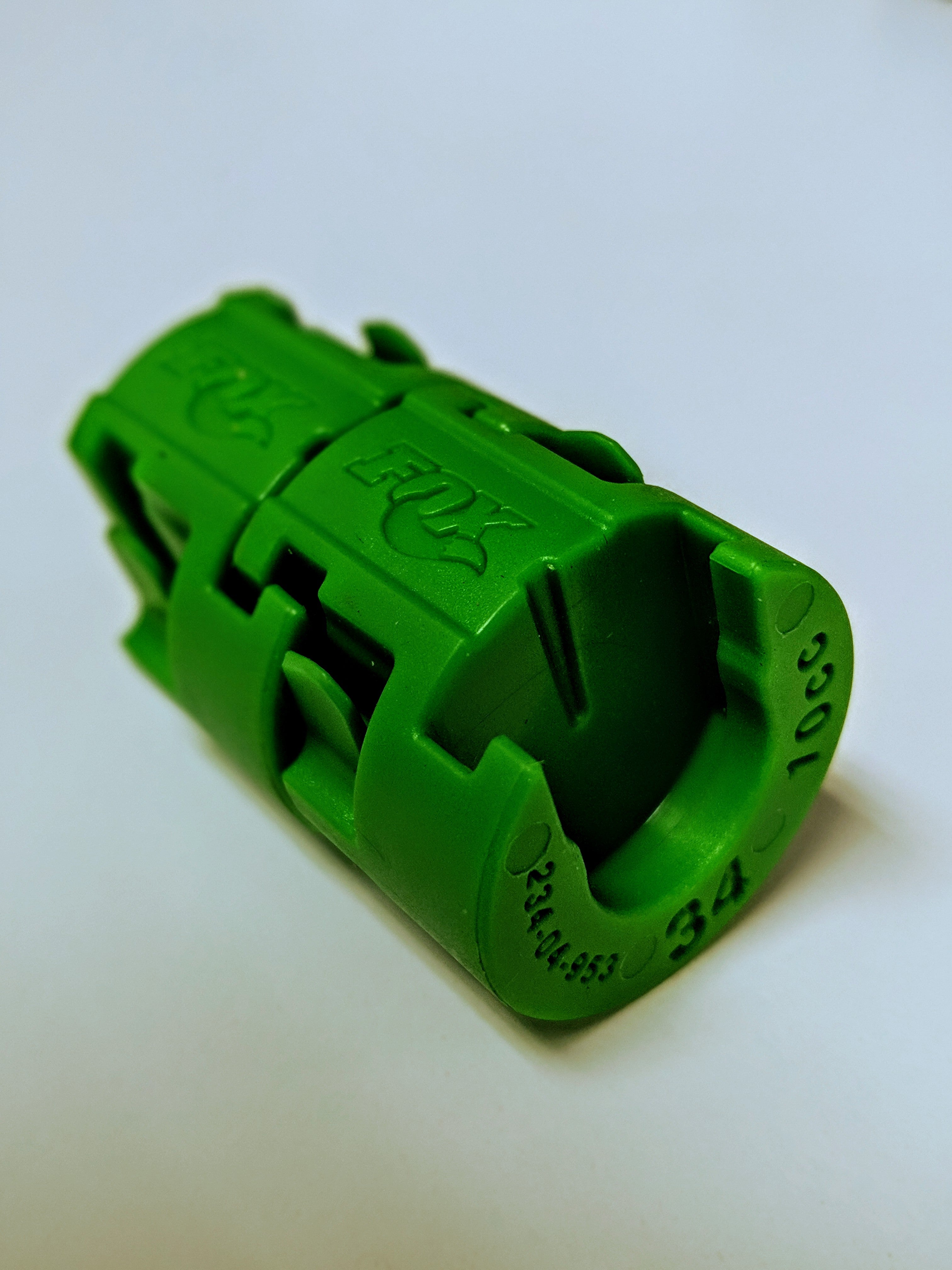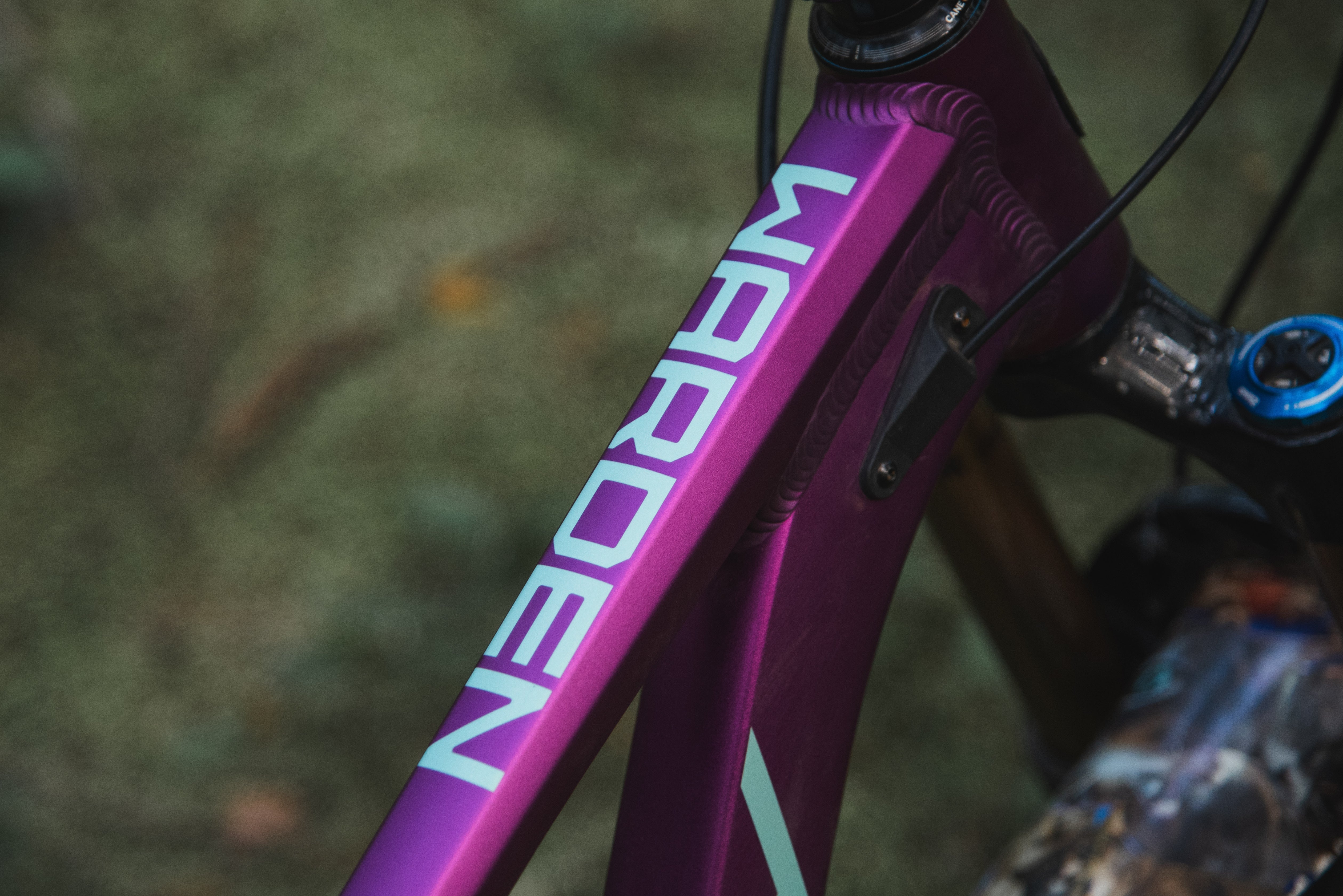
Last summer, I was super stoked to ride the BC Bike Race (an epic 7 Day Stage Race) on my Fugitive. In my last related blog post, I shared my set up and feedback on tire choice. As many of you are dialing your bikes up for another great riding season, I wanted to share my thoughts about the suspension setup that I used for the BCBR.
The suspension set up you choose will likely be determined by your riding needs; however, for this race I used the Fox Float DPS Factory EVOL rear shock and the Fox 34 Factory fork.
Shock setup The Float DPS Factory Evol shock is a 50mm x 185mm trunnion mount shock which generates 120mm of rear travel on the Fugitive. The Fugitive frame is also available in a Long Travel setup by using a 55mm x 185mm stroke shock which generates 135mm of travel; but I figured that this would be significantly overkill for the BCBR.
The Float DPS Factory Evol shock is a 50mm x 185mm trunnion mount shock which generates 120mm of rear travel on the Fugitive. The Fugitive frame is also available in a Long Travel setup by using a 55mm x 185mm stroke shock which generates 135mm of travel; but I figured that this would be significantly overkill for the BCBR.
The Fox DPS shock was set up with a 0.6 cubic-inch volume spacer internally which allowed for a nice mix of mid stroke support and bottom out resistance, which kept the shock relatively "non-saggy" on the climbs. Given the amount of road, gravel and pure XC style of riding during the BCBR, I decided to leave the shock's pedal selector switch in the "Trail 1" setting instead of flipping back and forth between the Firm and Open modes (something I rarely do).
At Knolly, we tune the Trail setting to have minimal low speed compression compared to the "Open' mode and the "Trail 1" setting is the lightest of all three available settings. This meant that the shock provides a small amount of additional pedaling platform compared to the open mode. By the end of Day 5, I hadn’t touched the shock's pedaling selector at all, and it had worked almost flawlessly. Day 6 was the North Shore day and the main climb was steep. I knew that it would not be technical; whereas the descent was straight down moderate “Shore” level descending (some people might disagree that the mid-section of Dale's is moderate, but it is relative to the harder trails on the Shore).
I contemplated using the Firm mode for the climb and then the Open mode for the descent but given that the bike was working so well, I left it. It turned out that the bike's performance was on point and it worked as expected for both the climbs and descents - I experienced minimum bob on the climbs and I was still smashing the descents as quickly as I could.
The Float DPS is the lightest duty shock that we offer with the Fugitive and it is oriented to be more technical XC vs All Mountain/Enduro. We offer a range of shock types for this bike (lightweight inline all the way to coil shocks with external reservoir), and the Float DPS' performance is skewed towards climbing and maximizing pedaling efficiency.
Ultimately a lightweight inline rear shock like the Float DPS is going to be a limiting factor in the Fugitive’s descending performance, however I was pleasantly surprised just how hard I could push the shock when descending. It's not going to have the flat-out crush everything in its path performance of a high volume linear air spring external reservoir or a coil shock, but given it's diminutive size (and my 100kg weight), I would say that its performance was absolutely great for every part of this race.
Fork Setup I selected the 140mm 34 Factory fork for the BCBR. This is really the shortest travel that we recommend for the Fugitive, although for an extremely XC build a 130mm travel length would be acceptable.
I selected the 140mm 34 Factory fork for the BCBR. This is really the shortest travel that we recommend for the Fugitive, although for an extremely XC build a 130mm travel length would be acceptable.
The Fugitive has an "approved fork travel range" of 130 - 160mm and Knolly supplies factory options in the 140mm and 150mm travel lengths. The Fox 34 in 140mm travel length suits the 120mm rear travel on this bike. The 34 is advertised by Fox as being their "Trail Fork" model and it strikes a balance between being
strong enough to handle some fairly serious riding, but light enough that you won't mind pedaling it around for many hours on end.
Compared to its big brother the Fox 36, the main difference is weight: 216g (0.45 pounds to be exact). The other main difference is the loss of the external HSC (high speed compression) adjuster on the 34 which is replaced by an "open mode adjust" dial which allows some firming up of the initial travel of the fork (i.e. to make the fork more pedal friendly).
In terms of riding performance, the main difference is mid-stroke support (the 34 lacks a bit of this compared to the 36) and when you're my weight, the 34 is noticeably less torsionally stiff than the 36.
This is a good time to take a segue into one of the trade-offs of 29" forks and wheels compared to 27.5" forks and wheels, they're simply not as stiff and you can wind them up more than a 27.5 setup (it's just physics!). This is a big reason for Knolly's move to 157 x 12mm on the back end of the Fugitive; it noticeably improves the bike's cornering ability and enhances tracking in technical situations.
I am secretly (not so secretly!) waiting for forks to move back to 20mm axles across the board which I think is needed for some of the lighter duty 29" forks in the market. Again, I'm a bigger dude, so perhaps this isn't as pressing an issue for lighter weight riders; they would probably want to save the 216g and tell me to suck it up or upgrade to a fork with a stiffer chassis such as the Fox 36! Ok, back to my Fox 34 setup. Internally I was running an extra volume spacer from stock and dropped my respective air pressure a few PSI’s to compensate for the reduced fully compressed air spring volume. This is a pretty typical situation. For example in the Fox 36, with stock volume spacers, I would run 85 PSI but drop that down to about 82.5 PSI with an additional volume spacer. If you're riding aggressively and/or are a heavier rider, I would highly recommend playing with the volume spacers inside Fox forks ("playing" generally means adding more). They are super easy to change, requiring only a few minutes of time, and even one additional volume spacer can make a significant improvement in mid-stroke support in steep technical descents.
Ok, back to my Fox 34 setup. Internally I was running an extra volume spacer from stock and dropped my respective air pressure a few PSI’s to compensate for the reduced fully compressed air spring volume. This is a pretty typical situation. For example in the Fox 36, with stock volume spacers, I would run 85 PSI but drop that down to about 82.5 PSI with an additional volume spacer. If you're riding aggressively and/or are a heavier rider, I would highly recommend playing with the volume spacers inside Fox forks ("playing" generally means adding more). They are super easy to change, requiring only a few minutes of time, and even one additional volume spacer can make a significant improvement in mid-stroke support in steep technical descents.  Again, the purpose of my Fugitive build was to tailor the components to my strengths and weaknesses as a rider and my suspension setup is the minimal that we would suggest for the Fugitive. For the type of riding during the BCBR, it was a perfect match. There were a few times where I would have preferred a more rigid chassis of the Fox 36, but if I took that approach across my entire build, then my bike would have gained 3-4 pounds of suspension, tires and wheels. This was weight that I did not want or need, for 95% of the event.
Again, the purpose of my Fugitive build was to tailor the components to my strengths and weaknesses as a rider and my suspension setup is the minimal that we would suggest for the Fugitive. For the type of riding during the BCBR, it was a perfect match. There were a few times where I would have preferred a more rigid chassis of the Fox 36, but if I took that approach across my entire build, then my bike would have gained 3-4 pounds of suspension, tires and wheels. This was weight that I did not want or need, for 95% of the event.
For more information on the BC Bike Race:
https://www.bcbikerace.com/
For more information on the Knolly Fugitive:
https://www.knollybikes.com/fugitive
Noel's take on his Fox suspension setup at the BCBR
Posted by admin on


